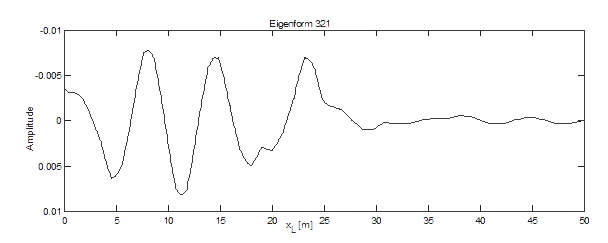Propagation of structural born sound
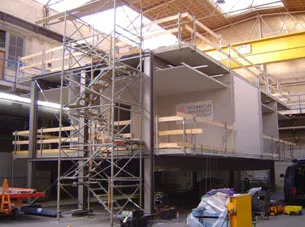
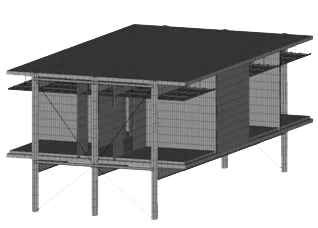
The introduction of vibrations into the structure and its propagation is examined using measurements. The results are used to updates a numerical model in order to predict the structural vibrations.
Example: In order to investigate the dynamic behavior of a building with widespread, reinforced-concrete floors, lightweight walls, suspended ceilings and floating floors measurements on a full-scale one story concrete test structure have been performed at TU Darmstadt which were compared to numerical calculations. The structure was harmonically excited in a frequency range of approx. 20-200 Hz using an electrodynamic Shaker. Additionally a FE model of the structure was used for numerical calculations.
Damping effects, caused by the additional lightweight walls, and the propagation of structural vibrations were investigated by testing different configurations.
Vibration protection systems
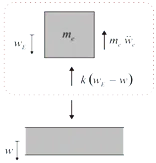
The excitability and the radiation of low frequency vibrations (frequency range below 100 Hz) can be reduced by modifying the parameters of the floating floors/suspended ceiling systems so that they behave similar to a tuned mass damper. Optimal configurations of these systems are proposed based on an engineering approach as well as geometric, complex numerical calculations.
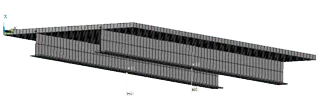

A reduced analytical model of the floating floor is developed using a impedance formulation. It allows to model the floating floor as elastic support of the plate. Hence, the dynamic problem can be solved analytically using a modal approach. The configuration of the tuned mass dampers is obtained based on a modal approach while the complete system is modeled using finite element method.
Oscillations due to moving loads
The influence of the dynamic excitation due to moving loads as e.g. a passing maglev train on the radiation of sound and vibrations of tracks is investigated. The dynamic calculations are done based on a semi-analytical approach which allows to further use the finite element model being already available from the design or planning stage in order to identify the critical load case combinations, load velocities and load lengths, which lead to a significant system response.

